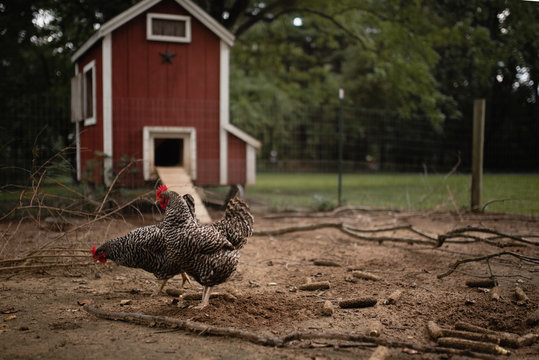
heater Effective Carbon
In recent years, more countries, organizations, and people are working towards creating a carbon net zero-emission world as climate change is becoming an increasingly vital and critical concern. The term ‘net zero’ refers to the fact that the amount of emitted greenhouse gases is equal to an equivalent reduction or off setting. This essay will reflect on the ways towards an effective net zero carbon emissions by focusing on the development of renewable energy, increase energy efficiency, sustainable transport, carbon capture, and personal responsibility.
Meaning and Understanding of Net Zero Carbon Emission
A state that is net zero carbon emission, where the amount of carbon dioxide it is releasing into the atmosphere is equal to the amount that it can remove. This is considered as very important because carbon dioxide, among the biggest reasons behind global warming. Reaching a net zero is something about a balance between a decrease in emissions and through natural and technological methods in ways that capture and store carbon dioxide.
1. Renewable Energies
The step that would be the most powerful towards achieving net zero carbon emissions is changing from fossil fuel to renewable energy. Renewable energy would be of a type such that electricity would be produced by sun, wind, and hydroelectric power with no emission of carbon dioxide. Cases like Norway and Germany show how the whole country could be powered in a sustainable way.
Solar energy.
This energy is referred to as solar power because it harnesses power from the sun. Long has been a technology that was much more efficient yet compared to not as costly and one used much for use in houses or stores.
Wind Power:
The other source in the list of renewable energy is wind. Kinetic energy from wind, through the medium of turbines, is converted into electricity. Places full of wind energy and places free from all natural constraints, such as plains, sea coast, have high generation capacity for enormous amounts of clean energy.
Hydroelectric Power:
Hydroelectric power is energy from the turbines of flowing water and is thus a reliable and safe renewable power source. It thus becomes feasible to add hydroelectric power to the supply chain if adequate supplies can be available. Thus for Brazil and Canada, who possess abundant water supplies, success has been made easy.
2. Energy Efficiency
The other significant stride toward attaining net zero carbon emissions will be the enhancement of the efficiencies of industries, buildings, and systems used in transportation. Energy efficiency simply defines getting something done in an energy-using process or product using less energy so as not to lose even any amount of energy due to doing it.
Energy-Efficient Buildings:
The design and retrofitting of buildings save energy significantly. This is through better insulation, energy-efficient lighting, and smart thermostats. Green building is a concept whereby buildings are designed to inflict the least amount of environmental damage. Industrial efficiency can be improved by increasing productivity while minimizing waste.
The industries can adopt low carbon footprint energy-efficient technologies and practices. Some of the prevailing practices include the upgrading of machinery, optimization of the production process, and the installation of waste heat recovery systems.
Transportation Efficiency
Transportation is one of the sectors with the highest emission. The carbon footprint of the transport sector decreases with better fuel efficiency in vehicles, public transport, and non-motorized transport options like cycling and walking.
**3. Clean Transportation**
Transportation is the largest carbon emitter. Clean transportation is a very important area where achieving the net zero carbon emissions benchmark can be reached.
Electric Vehicles:
They do consume electricity, so there’s no reliance on fossil fuel, hence not having tailpipe emissions. Car companies, along with the government, invest highly in EV technology and infrastructure also. With incentives like tax credit, rebates might make a few customers leave their old automobiles and move to these electric ones.
Public transport
With quality public transport services that function at higher frequencies, the private vehicles’ use will come down. Subsequently, pollution too will decrease. Cities such as Copenhagen and Amsterdam have related brilliant public transport with cycling infrastructure supporting sustainability in cities through mobility.
Alternative Fuels
Other than the above-discussed fuels, there is much work to be done on other alternatives such as hydrogen and biofuels. With these, carbon emission in any vehicle will be kept in control to form a viable alternative compared to all other fossil fuels available.
**4. CCS: Carbon Capture and Storage
Carbon capture and storage is one technology applicable for such industries. Cement and steel industries are hard to be carbonised. CCS defines carbon dioxide emission capture for any industrial procedure, which will be placed underground, or for applying in a second procedure
Captures
Carbon dioxide is drawn off from industrial processes with its removal through absorption, adsorption, or even looping in a chemical mode. The pressurised CO2 is transported from industrial process sites to the repository locations.
Carbon dioxide can be stored beneath geologic structures. This may include assimilation into an old oil and gas field or deep saline aquifers. In this way, carbon dioxide will not leak into the atmosphere. Global warming will thus be prevented.
Aside from assimilation for storage, the absorbed CO2 can be industrially utilized in enhanced oil recovery or synthetic fuels and chemicals.
5. Agroecology/ Sustainable Agriculture and Land Use
Agroecology and farming are some of the other principal sources of carbon emission generation. Their sustainability would consequently decrease the latter while also developing their sequestration.
Agroecology/Sustainable Agriculture
The sustainable agriculture practices would include some crop rotation, agroforestry, organic farming, and which actually reduces the carbon footprint that agriculture is given to society. They boost soil health, reduce dependency on chemical fertilizers, and enhance biodiversity.
Afforestation and reforestation
Through photosynthesis, trees and degraded forests can absorb vast amounts of carbon dioxide in the atmosphere. The amount of carbon held in tree biomass and soils is proportionate to the amount that has been absorbed by CO2 in photosynthesis.
Soils Carbon Sequestration
Carbon can be sequestered in soils through enhanced conservation tillage, cover cropping, and composting. Carbon sinks are healthy soils which counterbalance the carbon dioxide emissions from other sources.
6. Circular Economy
In a nutshell, it is an approach that seeks to eliminate waste and maximize the use of product designs meant to last, reused and recycled for a lower carbon footprint in the production process as well as consumption.
Since raw materials of lowest qualities go in entering as new products, hence minimum quantity of wastes are formed. The resources thus conserve themselves from getting polluted not only in the manufacturing but also from the disposed off material further later.
Recycling is the collection of waste materials followed by their conversion into new products. Upcycling changes waste material into higher value because a better-quality product is produced than the one being originally made, therefore reducing the need for virgin material and also emissions.
Waste Reduction
This also, through such conscious consumption and proper usage of resources that lower the levels of emissions. This is achieved by purchasing what is required, say from reusing products to exploring other ways of putting their usage into other avenues through an open-ended practice meant to foster a circular economy.
7. Policy and Regulatory Frameworks
The type of rules and regulations presented by the government has led to a net zero carbon emission trend. International agreements, like Paris Agreement, enforce strict goals against reducing the emission cutting. All countries try adopting the sustainable practices.
**Incentives and Subsidies:**
The incentives the governments could provide include monetary incentives and subsidies on renewable energy, energy efficiency, and clean transportation. This way, options would be even more accessible and affordable for consumers and businesses.
Carbon Pricing: Carbon pricing mechanisms include a carbon tax or a cap-and-trade system. These mechanisms create an economic incentive to reduce emissions. Imposition of such mechanisms imposes an economic cost of carbon such that industries are induced to engage themselves in cleaner technologies and practices.
Regulations and Standards: Sound policies associated with emissions, energy efficiencies, and waste management also catalyze more action towards a net zero position. Regulations and stringent standards force companies into being accountable for the output level of pollutants resulting from operation. 8. Community and Individual Action Net zero carbon emissions will be achieved through efforts by all the people in society. It is through communities and individual actions that people push on the boundary for change, and it is how a movement towards sustainability is accelerated.
Community Projects: Some of the projects may have renewable energy projects locally. They may have community gardens and reduce waste. They are group initiatives that show a step in sustainability and accountability. Individual Steps: Such can be done through little steps in the daily life of a person. It is what counts; saving energy, public transportation, and buying from a local green business make it. Education and Awareness: Another awareness of net zero-educating people on importance of sustainable practice.
Such is one big motivator to action because information can quickly spread out through schools, organizations, and media on such. Conclusion Achieving net zero carbon emissions is something complex but achievable if people work together, including the governments, industries, and communities, with their various actions. All this could be shifted towards renewable energy as well as improve efficiency through energy use, clean transport, carbon capture and storage, sustainable agriculture and land use, circular economy, and supportive policy frameworks.
This makes that journey to net zero every step forward through reducing the impacts of climate change but paving the way forward for a better, healthy, and resilient planet for generations to come.
By: Shreyash singh
Write and Win: Participate in Creative writing Contest & International Essay Contest and win fabulous prizes.


